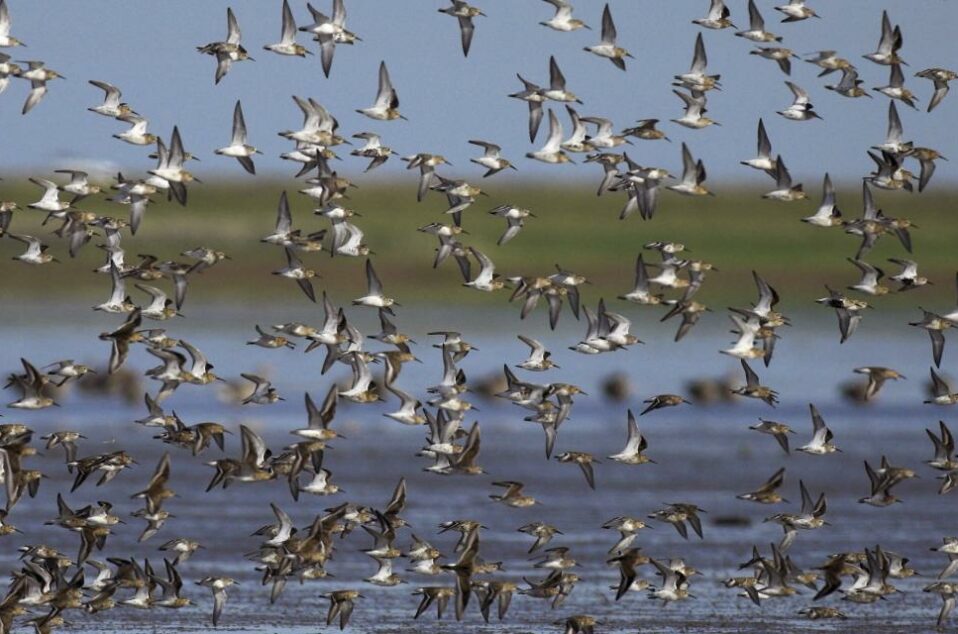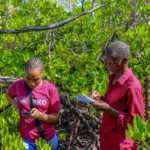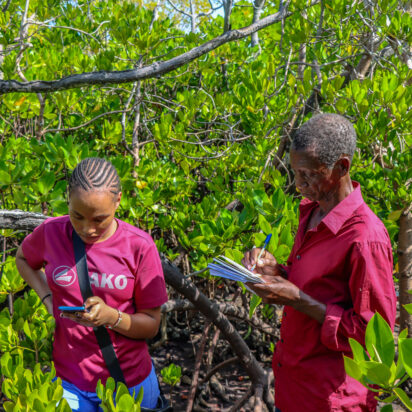Scaling science-based mangrove restoration in the Philippines
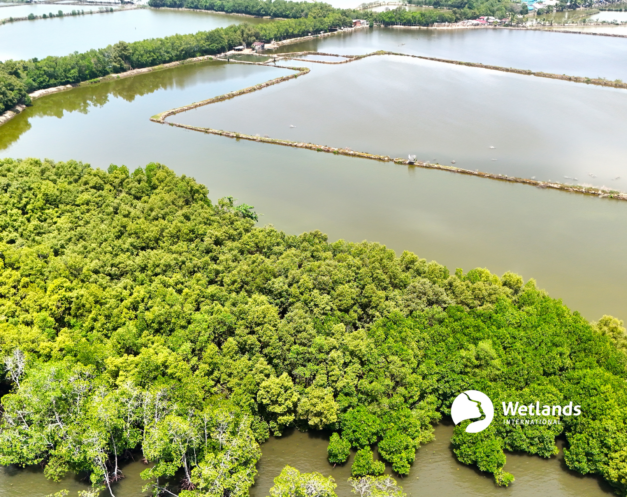
In the Philippines, Wetlands International is promoting scientifically backed, community-driven approaches to restore degraded mangroves while strengthening coastal livelihoods. By demonstrating how to integrate mangroves into aquaculture systems, influencing national policies and unlocking financial opportunities, we are scaling up sustainable restoration to pave the way for long-term resilience in the country’s coastal ecosystems.
Community-based Ecological Mangrove Restoration
In the Philippines, mangroves are lifelines for biodiversity, natural storm barriers, and key players in climate change mitigation. However, decades of deforestation for aquaculture and coastal development have left many mangrove ecosystems degraded. Since 1918, the Philippines has lost over 64% of its mangroves, declining to 284,798 hectares today (Global Mangrove Watch), a large chunk due to large-scale conversion of mangroves to aquaculture ponds.
In total about 33% of Philippines mangroves are found in protected areas, and a total of almost 24,000 hectares of mangrove are considered restorable (Global Mangrove Watch). Most restorable areas in the low intertidal zone have already been rehabilitated, leaving little room for further restoration. The best potential now lies in the mid to high intertidal zones where aquaculture ponds are located.
To restore degraded mangroves, traditional mass-planting and inappropriate planting efforts have often failed, with low survival rates and poor long-term outcomes. Wetlands International Philippines promotes the uptake of Ecological Mangrove Restoration (EMR), replacing outdated mangrove mass planting methods.
EMR focuses on restoring natural hydrology, sediment dynamics, and ecological conditions, while also creating a supportive socioeconomic environment to develop biodiverse, resilient mangrove forests. Interventions typically involve breaching dike walls and re-creating tidal creeks, with minimal need for enrichment planting unless seedling supply is insufficient. It is our aim to make CBEMR the new standard for mangrove restoration.
In the Philippines, approximately 30,000 hectares of so-called abandoned, undeveloped, and underutilised (AUU) ponds could be fully restored through EMR while another 30,000 hectares of active aquaculture areas could adopt mangrove-friendly practices.
Transforming Aquaculture with Mangroves: Associated Mangrove Aquaculture (AMA)
For brackish-water ponds with valid legal instruments and fish yield, a more sustainable way of production should be promoted. Intensive aquaculture practices in the Philippines, particularly for shrimp and fish farming, prioritize short-term yields, resulting in long-term environmental degradation.
A landmark achievement of our work in the Philippines has been the establishment of the country’s first-ever Associated Mangrove Aquaculture (AMA) pilot demonstration sites in Bataan (Manila Bay, Luzon) and Macajalar Bay (Misamis Oriental, Mindanao). In collaboration with Bataan Peninsula State University and the Macajalar Bay Development Alliance, these pilot projects integrate natural mangrove regeneration within active fishponds—a ground-breaking nature-based solution that benefits both aquaculture and ecosystem health.
By reintroducing mangroves into portions of aquaculture ponds, AMA helps:
• Restore riverine mangrove greenbelts, enhancing coastal protection
• Improve pond water quality, as mangrove roots filter pollutants and heavy metals
• Strengthen aquaculture productivity, providing natural fish nursery habitats and reducing reliance on
external fry sources
• Reduce maintenance costs, as mangroves help stabilize pond dikes and protect against wave erosion.
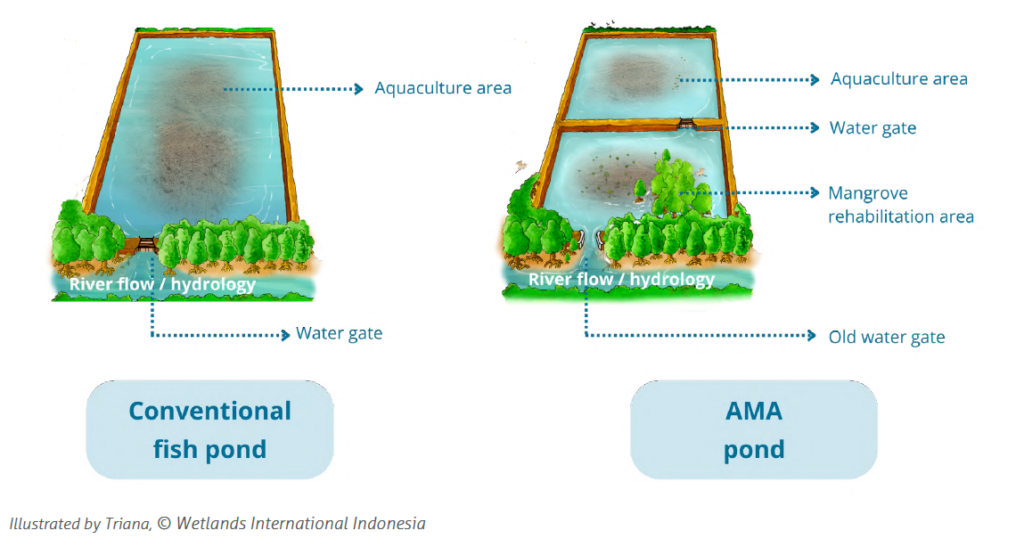
While still in early implementation stages in the Philippines, AMA has already garnered interest from the Bureau of Fisheries and Aquatic Resources (BFAR) as a potential national strategy for scaling up sustainable aquaculture and mangrove restoration. This could mark a significant policy shift—where abandoned, undeveloped, or underutilized fishponds (AUU’s) are repurposed for ecological restoration, aligning conservation with food security and economic resilience.
Enhancing National Mangrove Policies and Plans
To scale up science-based mangrove restoration, Wetlands International Philippines supports policymakers to institutionalize EMR and AMA approaches within government strategies. We have:
- Provided technical advise for policy guidelines aimed at cancelling Fishpond Lease Agreements of AUU fishponds, allowing these areas to be reverted back to mangroves
- Supported the development of Provincial Mangrove Restoration and Conservation Plans for Pampanga and Bataan, aligning with the national goal to restore 17,000 ha of mangroves in Manila Bay by 2040
- Contributed to the validation of the National Mangrove Map (coordinated by PhilSA and DENR), which provides crucial spatial data for the planning of priority conservation areas
- Advocated for key legislative reforms, including the Integrated Coastal Management Bill, currently pending in Congress, which aims to strengthen legal protection for mangroves nationwide
- Facilitated high-level policy dialogues on coastal greenbelt restoration, sustainable salt production, and the National Wetlands Conservation Bill, further embedding mangrove conservation into national development agendas
Upscaling mangrove conservation and restoration also requires approval of various important policies, including the National Coastal Greenbelt Action Plan. It specifically focuses on the expansion and protection of mangrove and beach forests along the coastlines, and can help overcome many tenurial and bureaucratic hurdles currently obstructing mangrove restoration efforts.
Furthermore, Wetlands International advocates for mainstreaming of science-based mangrove rehabilitation in the private sector, to rectify and update corporate social responsibility (CSR) programs, especially those related to the mass planting of mangroves in existing mudflats and seagrass beds.
Developing and financing large-scale mangrove programmes
To achieve lasting impact, Wetlands International aims to address key barriers to large-scale restoration, such as complex land tenure issues in restorable areas, the wider adoption of EMR and AMA approaches to restore mangroves, and the enforcement of laws that protect mangroves against other threats such as reclamation, illegal cutting and coastal development.
To achieve this, we need mangrove programmes scaled up to the landscape level, long-term financing and large-scale investment in mangrove restoration, capacity building on best practice mangrove restoration and the approval of various important policies.
Wetlands International is a founding partner of the Global Mangrove Alliance and established a GMA Philippine Chapter in 2023 together with CI Philippines, Forest Foundation Philippines (FFP), Rare Philippines, WWF Philippines, and ZSL-Philippines. The GMA chapter will be instrumental to tackle critical barriers to mangrove restoration in the Philippines. It it also a promising vehicle to secure funding from international donors and climate finance mechanisms and to align with the Mangrove Breakthrough, a global commitment to safeguarding 15 million hectares of mangroves worldwide by 2030.
With the right investments and policy support, the Philippines has the potential to lead the region in restoring mangrove ecosystems as natural storm barriers, thriving hubs of biodiversity, carbon sequestration, and sustainable livelihoods.
Annadel Cabanban


